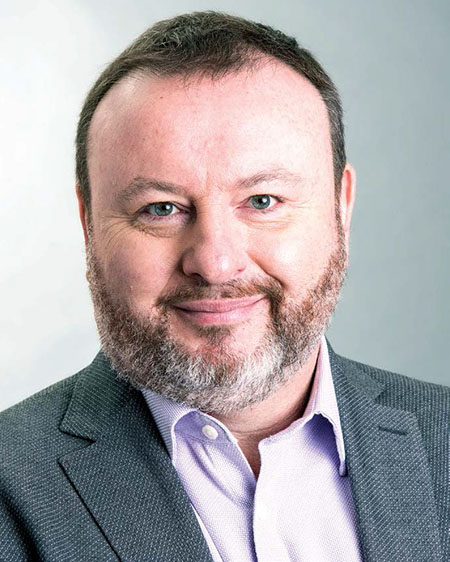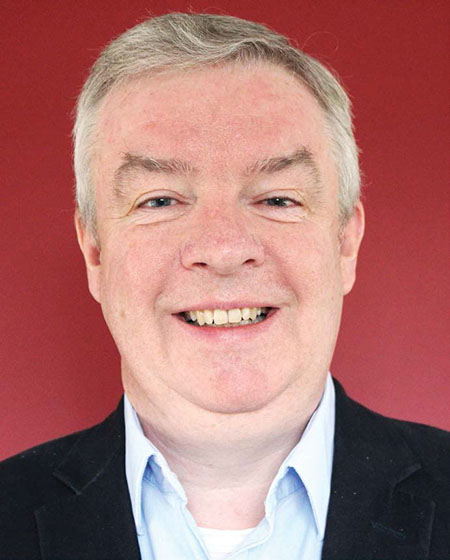IP Expands Audio Monitoring Capabilities
NEW YORK—Like most everything else in our industry, the world of broadcast audio monitoring has undergone a rapid rate of change, particularly in the area of audio over IP. A year ago, it was still open to debate whether AES67 would become the de facto standard; that issue seems to be settled now.

Martin Dyster, vice president, Business Development - TV, The Telos Alliance, TV Solutions Group
“In the last 24 months manufacturers of different protocols have come together under the AES67 banner, which is very helpful,” said Martin Dyster, vice president of business development-TV at The Telos Alliance, TV Solutions Group. “Customers don’t have to go down one route exclusively; they can buy products from different manufacturers. And they play nicely together.”
Mark Davies, director of product management at U.K.-based TSL Products concurs. “We’re seeing consolidation around AES67,” he said, adding that “this brings a number of benefits, particularly in the area of interoperability. Dante and Ravenna products now both support a common format, AES67, allowing interoperability.”
SMPTE STANDARD
Davies points to the momentum surrounding the SMPTE 2110 standard for media transport over IP, which is close to completion and uses AES67 as the audio transport layer.
“From a technical standpoint, there are challenges; command and control abilities are separated from the audio essence, for example,” Davies said. “But as part of SMPTE 2110, these things can all be handled in metadata. It’s an application and experience thing, and AES67 has already gotten big traction in the U.S. radio market.”
Kirk Bradford at Renegade Labs is more cautious. “Many of our customers are looking into networked audio, including AES67, for the first time,” said the director of marketing for the Grass Valley, Calif.-based company.
The professional video industry's #1 source for news, trends and product and tech information. Sign up below.
Several months ago, Bradford surveyed the company’s distributors about how customers use networked audio. “What I found is that most customers have not started using networked audio in broadcast; it’s still in its infancy,” he said. “A few said it was being used but mainly in radio and some live applications.
“Our distributors did feel that the trend was moving towards this direction, but they believe that many customers are still in a ‘wait and see’ mode, trying to figure out what direction the industry is heading.”
Has the apparent consolidation around AES67 had any impact on the leadership position in networked audio that was established by Audinate’s Dante?
“When there were no alternatives, it was the well-respected leading provider,” said Davies, referring to Dante. “Their modules are reliable, solid, and Audinate has built a good market share. My feeling is that Hydra is in third place, Ravenna in second. But AES67 is not tied to any one manufacturer. Facility owners who are looking to build IP-based studios for the first time don’t want to be tied to a single manufacturer.”
Dyster believes that the field is wide open. “I don’t think Dante reigns supreme,” he said. “They have gotten on board with AES67, which is great. Media over IP is what’s happening in our industry, and we’re in a situation that parallels where we were when Dolby E came out with everyone looking at video product manufacturers to play catch up to audio. The movement towards video over IP means that audio is essentially playing second fiddle again. Unified device control and discovery with regard to video is likely to be considered what’s most critical; audio will follow.”

Mark Davies, director of product management at U.K.-based TSL Products
WILL AI KILL AUDIO MIXING AND MONITORING?
With artificial intelligence making inroads into industries worldwide, could intelligent audio monitoring systems eliminate the need for audio mixers in the broadcast industry, or significantly reduce their responsibilities?
“I think we believed [in the past] that a ‘set and forget it’ mentality would become the norm, but things haven’t turned out that way,” said Dyster. “There is still a great deal of passion when it comes to creating audio for broadcast. It’s an art form, and mixers want to tailor the experience for their audiences. There is some automated correction and monitoring, but it is certainly not universal at this time.
“Automated products have a place, but we’re not seeing them being invested in on a global scale,” Dyster added. “Automation can’t make a wide enough range of intelligent decisions, at least not yet.”
Bradford agrees. “I believe you are starting to see more software-based products that can perform a wide range of audio monitoring/QC on file-based workflows,” he said. “This methodology should move over to broadcast television, especially with networked audio. However, I do believe there will always be the need to do inline monitoring when problems arise.”
Jon Schorah, founder of Nugen Audio, says that the U.K.-based company—which specializes in loudness metering and correction—is seeing a move away from real-time processing. “Program loudness and dynamics are best addressed in post-production in the NLE or as a file-based process,” he said. “As this trend continues, most broadcast audio will already be loudness compliant and suitably dynamic, so monitoring increasingly becomes a case of identifying transmission errors, confirming compliance and detecting equipment failures.”
Schorah added that live broadcast audio is a case where real time monitoring is important. “Delivering a high-quality audio production in real-time remains the province of the skilled audio engineer,” he said. “Live events are by nature unpredictable and the best way to handle them is with an engineer responding to the event as the action unfolds, using intuition and experience to deliver the best audio possible.”
Immersive audio is another hot topic. Experiments with as many as two dozen small speakers designed to expand beyond the limits of 5.1 systems and bring ever more realistic audio to the home theater environment have been conducted in Japan and elsewhere over the last decade or so, but the verdict is out on whether home theater owners will gravitate towards this technology.
Still, Schorah believes we may be on the cusp of a new era.
“In the last 12 months, we have seen a surge of interest in immersive audio technology,” he said. “The initial demand was largely driven by film productions however, we are now seeing more and more interest from the television production community. Many post-production studios are now installing multispeaker arrays for immersive audio playback and providing access to 3D capable audio tools [such as our Halo Upmix plug-in] to meet the production demand, which has been a high priority.”
